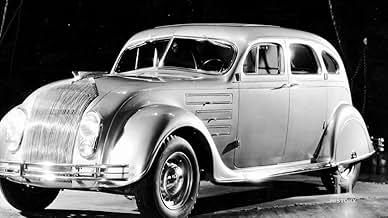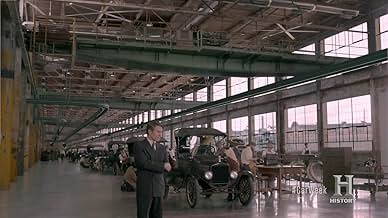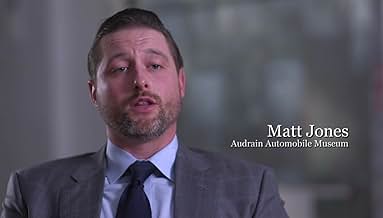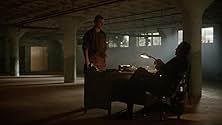Aggiungi una trama nella tua linguaThe history and influence of cars in America.The history and influence of cars in America.The history and influence of cars in America.
Sfoglia gli episodi
Recensioni in evidenza
The one thing that I found lacking in an otherwise very good series is the almost complete disregard for the independent carmakers. In many cases these companies and the people who ran them took the point for Automotive innovation, while the big three simply copied their innovations. Companies like Studebaker, Nash, Hudson aren't even mentioned.
Don't let the sour grapes from the gear heads fool you. This docudrama achieves its purpose of a comprehensive overview of the auto industry's emergence and integral part of the industrial revolution in the United States. And, how it interconnected with, steel, railroads, petroleum, finance, a national highway road system, the rise of labor unions, war efforts, and all the rest, to become the greatest economic engine the world has ever seen.
Disappointed at the lack of technical accuracy. Being a photographer, I noticed right away that turn of the century photographers were using 50's camera's and flash bulbs. flash bulbs were not invented until 1926. You see flash bulb use throughout the episode. Cameras of the day were sheet film, box, and bellows. Only professional photographers used flash pans. Also, what about the electric cars? Henry Ford's wife only drove electric. Actors are overdressed and are guilty of over acting. Assembly line shots are a laugh.
A good series Which I enjoyed. However, the 3rd Episode was quite Chevy biased and was not kind to Ford. I am a Man of good Morals, but Lee Iacocca was quite a genius and is portrayed as a stuffy Man of Morals, while John DeLorean, a Creative man, but Someone whose ego was huge, which held him back from being great, was Made to look like an automotive genius, and His Cocaine arrest was played down..
Questionable, yep, questionable...
Ed Cole, the head of Chevy driving a 56 Mercury and taking Alfred Sloan for a ride in it. Really? Who authenticated the use of the correct cars in this program? Certainly no one that knows anything. Henry Ford II riding in a Packard? Can't imagine he would've ever done that given his family history. The characters weren't always believable because they didn't look like the real people. Walter Chrysler, Henry Ford, Alfred Sloan, etc. The storyline itself was good. Repeating 2-3 minutes of the tail end of the show previous to a commercial or from the previous evening is a pure waste and monotonous. Something another auto-related channel is famous for. 44 years in the auto hobby. If nothing else make sure you have the correct brand of cars when you portray them with specific people that you identify them with. Ask experts. Don't guess!
Lo sapevi?
- ConnessioniEdited from La grande corsa (1965)
I più visti
Accedi per valutare e creare un elenco di titoli salvati per ottenere consigli personalizzati
- How many seasons does The Cars That Made America have?Powered by Alexa
Dettagli
- Data di uscita
- Paese di origine
- Siti ufficiali
- Lingua
- Celebre anche come
- L'incroyable histoire de l'automobile américaine
- Azienda produttrice
- Vedi altri crediti dell’azienda su IMDbPro
- Colore
Contribuisci a questa pagina
Suggerisci una modifica o aggiungi i contenuti mancanti
































